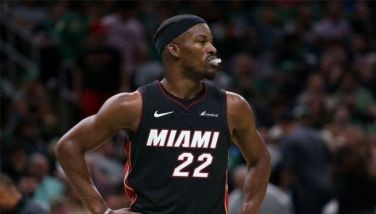Balloon
Imagine you are a flatlander, that is, someone who lives on a flat, two-dimensional surface, as ants do. A triangle on this surface will not be seen by you as a triangle. If you walk along its sides, you will only see three segments connecting each other at three sharp corners. Similarly, a sphere that crosses your universe will only be recognized by you as a circle, well, not even a circle since all you’ll ever see will be a smooth curving line with no corners.
Today on the solemnity of Mary’s Assumption, i.e. her being taken up body and soul to heaven, we are reminded once more of spherical things cutting across the flatness of our world. In other words, this feast today celebrates how our life, our God, our origin and destiny, how all of these are bigger than we can ever imagine.
It helps that science has given us oblique clues on the possible shape of the universe. Now we know better than to assume that our world is made up of only three dimensions of space (as a 3-D movie is) accompanied by a fourth flowing dimension called time. Think 3-D television floating on a river. These dimensions are inextricably woven into each other. Think warped TV bending the river of past and present, and flowing “back to the future.”
Before you go “somewhere in time,” know that some think our universe may actually be made up of eleven dimensions, that is (fasten your seat belts now), eleven corners bordering our world, and all eleven lines connected and running perpendicular to each other. You’ll need a special protractor or T-ruler to draw such a universe.
A multi-dimensional balloon that floats into our flat world will of course just blow our mind, which is why only mathe-maticians can tie a string to it and give it to us in cryptic threads of numbers and letters and wiggly symbols. Be consoled: even your alien teacher of geometry or physics won’t be able to hold that balloon.
But the Assumption we can hold.
We do not need a PhD in astrophysics to assume the Assumption. We only need to be catholic. And that means we need only try to be human and truthful; we need only be childlike and open to balloons that blow our flat two-dimensional lives.
One cannot be a catholic and at the same time unimaginative. We cannot be catholic without being effusive and baroque about life. Think jeepney or even Bernini. We cannot be catholic while at the same time dogmatically empirical or literal about the world, the Bible, and God. Think art or even the poetry of those elegant equations.
In other words, we can hold the Assumption not because of any compelling evidence (there isn’t any in a flat world, not even in the Bible). We believe Mary to have been taken up body and soul to heaven because of an intuition (deeply feminine perhaps), an inner sense of where love takes us ultimately and what love offers us finally.
This “kutob” is drawn from our own devotion, from sensing how we love, who we believe in and why we continue to hope despite the data. We are not being naive or irrational here when we assume the Assumption. It is what we hold to be true not only of Mary but of our destiny as disciples as well.
When we hold the Assumption, we do so believing somehow that this world matters, even if it means bearing in our bodies the scars of love for all eternity. When we hope with this woman to be taken up into heaven, flesh and spirit, we do so trusting ultimately in the wholeness of God’s desire.
On her entry to heaven, the German poet Rainer Maria Rilke writes:
“Yet as she now — this, oh, so touching figure —
joined inconspicuously the ranks of all the
newly blessed — light and transparent — as she stood,
there shone out of her being a hidden reserve
of such brilliance that the angel next to her,
blinded by her light, cried out: Who is she?”
Who is she? No more than a flatlander who can astonish the angels when earth breaks into heaven.
We can be disheartened by many things about our faith. We can doubt the priest at the altar or doubt that white piece of flat bread which he raises and pronounces to be the body of our Lord. We can easily slide back to our flatland theories, diagnosing (sometimes pontificating) how the atomic structure of that circular piece of bread makes it only bread.
Or with the faith of Mary, we can come to our senses and catch the gracious crossing of a greater spherical reality into our world.
Who is she? She is the one who held the body of our Lord, and who raised his body close to hers. The one whose flesh is his flesh, whose blood is his blood.
Eternally and eminently, she is Christ’s. She is one of us. And we are hers.
* * *
Fr. Jose Ramon T. Villarin SJ is President of Xavier University, Ateneo de Cagayan. For feedback on this column, e-mail tinigloyola @yahoo.com
- Latest
- Trending


























